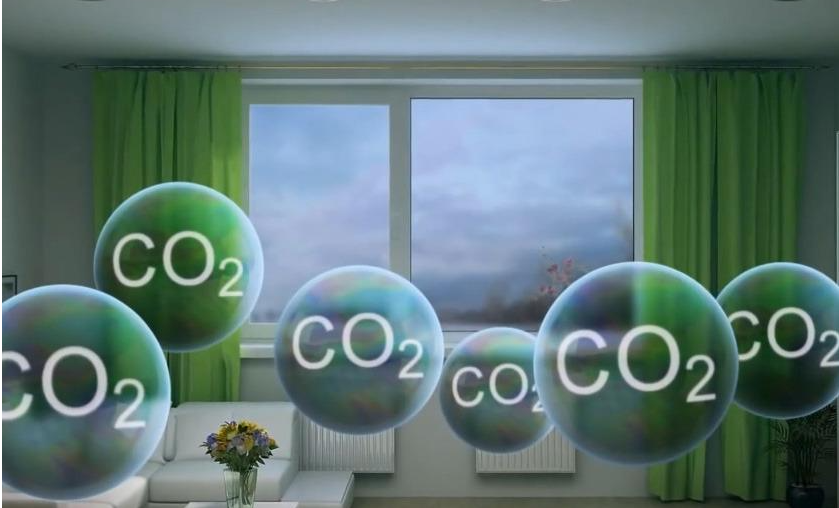The American monthly magazine "Popular Science" reports that carbon dioxide, a greenhouse gas that comes with magical skills, not only wreaks havoc on the atmosphere at high concentrations, but also has an impact on indoor air quality. Indoors, as humans exhale carbon dioxide, we are in enclosed spaces where the concentration of this gas is often much higher than outdoors; the more people there are per unit of space, the faster the carbon dioxide levels in indoor air rise.

The reason "Popular Science" reported the results of this long-discovered study goes back to an academic art conference ......
In June 2019, at the "Connecting the Milky Way and Neighboring Galaxies" conference in Helsinki, Adam Ginsberg, a researcher at the National Radio Astronomy Observatory (NRAO) in the United States, "took a fish out of water" and secretly connected an air quality monitor to his computer to observe carbon dioxide concentrations in the conference room. He secretly connected an air quality monitor to his computer to observe the carbon dioxide concentration in the conference room.
The results found that the indoor carbon dioxide concentration is much higher than the American Society of Heating, Refrigerating and Air-Conditioning Engineers recommended maximum indoor level (1000ppm to 1200ppm).
With the mindset of " research is justified," Ginsburg recorded the indoor carbon dioxide data every day of the meeting.
He found that the CO2 levels rose rapidly shortly after the start of the next day's speaking program. An hour after the first speaker's presentation, the concentration peaked at 1,700 ppm, and during a break when the room was opened for ventilation, the concentration dropped dramatically.
When Ginsberg revealed the recorded data to the other scientists in attendance, the scientists slapped their thighs: "No wonder I keep dozing off, it's all because of carbon dioxide!"
Thus, Ginsberg, the people's scientist, concluded that high carbon dioxide concentrations make people drowsy and lethargic.
High carbon dioxide concentration affects people's mental state, so will higher concentrations of carbon dioxide jeopardize people's health?
The answer is yes.
The human body inhales too high a concentration of carbon dioxide will affect the respiratory system, the body's blood carbonate concentration increases rapidly, acidic enhancement, and acidosis.
How do we know the indoor carbon dioxide concentration? With an air quality detector equipped with a carbon dioxide sensor, you can know the indoor carbon dioxide concentration in real time and ventilate the room at the right time.
AUDIOWELL carbon dioxide sensor, is a carbon dioxide sensor based on the principle of non-spectral infrared absorption. Its working principle is to determine the intensity and wavelength of infrared light irradiated into the air, absorbed by the carbon dioxide in the air, the receiver tube through the detection of the intensity of the absorbed infrared light output the corresponding electrical signal. The receiver tube detects the intensity of the absorbed infrared light and outputs the corresponding electrical signal. The sensor internally filters and amplifies the electrical signal, and the mcu calculates the concentration of carbon dioxide in the air through an algorithm, and outputs analog signals in the form of PWM and digital signals in the form of UART serial port.

Product Features:
High measurement accuracy
Wide measurement range






 Focus on us
Focus on us